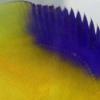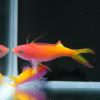-
Posts
16,553 -
Joined
-
Last visited
-
Days Won
29
Content Type
Profiles
Forums
Gallery
Everything posted by yikai
-

OMG! Look at these hybrids and rare fishes!
yikai replied to Digiman's topic in FOWLR (Fish-only with Live-rock)
-

OMG! Look at these hybrids and rare fishes!
yikai replied to Digiman's topic in FOWLR (Fish-only with Live-rock)
they have never appeared in the trade before. the one picturd above is from Liveaquaria, but i think it was not put up for sale. -

OMG! Look at these hybrids and rare fishes!
yikai replied to Digiman's topic in FOWLR (Fish-only with Live-rock)
-

OMG! Look at these hybrids and rare fishes!
yikai replied to Digiman's topic in FOWLR (Fish-only with Live-rock)
does not seem special enough. Google alpheus randalli and at least have 1 or 2 pure white ones. i think the pure yellow and red ones more special! -

OMG! Look at these hybrids and rare fishes!
yikai replied to Digiman's topic in FOWLR (Fish-only with Live-rock)
definitely got coral beauty blood. its a rusty beauty. i don't see any flame blood. and is that terelabrus sp? -

WEEKLY UPDATE - 22TH TO 28TH NOV 2010
yikai replied to Regal's topic in Weekly LFS Stocks Report / LFS Info Centre
could not have said it better myself! -
no problem. wanted to write this long ago but thought no one would be interested. but someone requested for me to write it yesterday so what the heck! haha! so i'm happy to do it
-

WEEKLY UPDATE - 22TH TO 28TH NOV 2010
yikai replied to Regal's topic in Weekly LFS Stocks Report / LFS Info Centre
i not sure. 25? -

WEEKLY UPDATE - 22TH TO 28TH NOV 2010
yikai replied to Regal's topic in Weekly LFS Stocks Report / LFS Info Centre
Iwarna Nemanthias carberryi very nice. Many are big males and the 2 dorsal fin spines are very cute and interesting. Dorsal fin has a green patch that makes it striking when it quivers it's dorsal fin. -

WEEKLY UPDATE - 22TH TO 28TH NOV 2010
yikai replied to Regal's topic in Weekly LFS Stocks Report / LFS Info Centre
CF maldive shipment have mitratus butterfly, dracula goby and sunset anthias. -

WEEKLY UPDATE - 22TH TO 28TH NOV 2010
yikai replied to Regal's topic in Weekly LFS Stocks Report / LFS Info Centre
Cirrhilabrus johnsoni at CF is sold -
That sums up my dummies guide to reef safe butterflies. The family is very big with many many many species, and there are more "reef safe" ones from the genus Roa for example. But these genus are very very rare and never available to us, so i did not list them down. I hope the mini guide above is useful and will help you in your future decision if you ever look at a butterfly. And i hope after this thread, butterflies will be looked at in a different light!
-
The gorgeous allopatric butterflies of the "Tinkeri complex". Genus : Chaetodontidae, subfamily (Roaps). The Roaps butterflies are my favourite. All are super beautiful and as hardy as damsels. These are some of natures best kept secrets. Deep dwelling denizens that do not appear frequently in the trade, but when they do, they are quick to go. Very easy and hardy, almost always do they start feeding minutes after arrival. They take shipping very well and because of their wide range of foods in the wild, are not fussy with aquarium foods. This genus boasts of 5 beautiful gorgeous species. 4 of which are available, and one is unobtainable. They are, Chaetodon burgessi, C. declivis, C. mitratus, C. tinkeri and the unobtainable one that lives in Guam, C. flavocoronatus. Reef safe qualities : These are deep dwelling butterflies that feed on a whole variety of things in the wild. Because of their varied diet, corals are part of it. However, they are reef safe to a certain extent like dwarf angels, and i rate them 50% based on personal experience. They have a very itchy mouth and like nipping on the slime of SPS. Do not fret, because a little harmless nipping can't and won't do any harm! Nip away! This genus is like dwarf angels and only keep them if you are willing to take some calculated risk. Hardiness : As hardy as any butterfly can get. All will start feeding immediately and are very greedy. 5/5! C. burgessi, the Burgess butterflyfish, is available with some regularity from Philippine shipments. The black and white contrast is very beautiful. C. declivis, the Declivis butterflyfish, is also another butterfly that is available with some regularity. It is imported in via Hawaii shipments. Very hardy as well and a beautiful fish! C. mitratus, the Mitratus butterflyfish, is a rarity from the Indian ocean. It is imported in via Maldive shipments and is very uncommon. It is a beautiful species that has bold yellow and black markings, unlike the others which are usually white and black. C. tinkeri, the Tinker's Butterflyfish, is another rarity hailing from Hawaii shipments. It's pearly white body and striking dark black oblique back makes a bold and daring statement. Reefers who are willing to pay the hefty price tag are rewarded with a beautiful, hardy and rewarding fish!
-
The atlantic beauties of the deep. Genus : Prognathodes The genus Prognathodes boasts of 11 known species and 1 undescribed species. They are, P. marcellae, P. aya, P. guyanensis, P. carlhubbsi, P. dichrous, P. obliquus, P. brasiliensis, P. aculeatus, P. basabei, P. guyotensis, P. guezei and P. falcifer. The last is an undescribed species. Out of all 12 species, only P. marcellae is available locally through African shipments. P. aya, P. guyanensis, P. brasiliensis and P. aculeatus are all available but have not reached our local market yet. All are atlantic species, and P. guyanensis is the rarest of this batch and most expensive, at over 1k. P. falcifer, P. carlhubbsi, P. obliquus, P. basabei and P. dichrous are all unobtainable and are super rare. The last two, P. guyotensis and P. guezei are so rare and live so deep, that no proper picture has ever been taken of them. Making their rarity so legendary that words nor pictures can describe it. Reef safe Quality : 80%. This group of butterflies are mainly deep water species that do not see or eat much corals in the wild. They behave themselves very well in the reef tank. Hardiness : Fortunately, they are quite hardy and will feed on mysis shrimp sooner or later. A dim tank is best for them but they can adapt to higher brighter reef quality lighting. Only P. marcellae is available readily locally, so I will only show the photo of this. The other members are extremely beautiful and google images have plenty of images as well as photos of them all! Do take a look at this gorgeous and unique family of fish.
-
The coral fishes, made famous by the Copperband butterflyfish. Genus : Chelmon No other butterfly is probably as famous as the Copperband butterflyfish, which hails from the genus Chelmon. Not many know that this genus boast of two other very rare cousins of the copperband butterflyfish, making the number in this small family, three! Famed for eating aiptasia, these group of butterflies are very reef safe. Due to their elongated snout, invetribrates and tiny crustacean living in rocks are their preferred choice of food. However, the odd one may nip on some soft corals, clams or LPS. They are not 100% reef safe, but safe enough to be added to a reef tank without fear. Reef safe qualities : All three members rate a high score of 85-90%. Hardiness : Copperbands are sensitive and difficult to settle down, as such, a rating of 3/5 is given. However, the two other fishes from this genus, the Margined coral fish (Chelmon marginalis) and the Muller's butterflyfish (Chelmon muelleri), rate a high score of 4/5, often settling down and feeding very readily on frozen food and mysis. Due to their small mouths, pellets are not easily accepted, so frozen food is best. The copperband butterflyfish (Chelmon rostratus). The most commonly available species in this genus. Difficult to feed, but very safe with corals and a true beauty! The Marginalis butterflyfish (Chelmon marginalis). This rare butterflyfish looks identical to a copperband, except it is missing the middle bar and the eye spot. Found only in Australia, this fish has only been brought in to Singapore once and it is very very rare to find it here. Very much hardier than the Copperband, it will begin feeding on mysis shrimp soon. The Muller Butterflyfish (Chelmon muelleri). This is also an Australian endemic, like the marginalis butterfly. It has not been brought into Singapore before and like the marginalis, it is easy to get feeding. Very rare in the market due to it's unpopularity as a drab fish.
-
The longnosed Butterflies. Genus : Forcipiger This genus consists of two species. The yellow longnosed butterflyfish, and the long-long nosed butterflyfish. Most people do not know that there are two very similar looking species! But the difference is subtle. Frilly looking and delicate, these are some of nature's hardiest butterflies! If a healthy and fat specimen is acquired, they will begin feeding almost immediately. This is one of the most misunderstood butterflies. It is often said that the longer the nose, the more harmful it is, as the "nose" is used to pick out coral polyps. This is highly erroneous! The long tubular mouth parts are made to pick out tiny worms and invertebrates living in rocks and amongst coral polyps. The mouth parts are very delicate and coral polyps are not part of the diet. As such, they are very reef safe. However, feather worms will be destroyed. the long-long nosed butterflyfish is the 3rd of the 3 100% reef safe butterflies. The yellow long nosed butterfly is less reef safe, but still score a very high rating. Reef safe quality : Long-long nosed butterfly 100%, Yellow long nose butterfly : 95% Hardiness : Due to the longer snout of the long-long nosed butterfly, it is harder to feed and score a 3/5. The yellow long nosed butterfly is a ridiculously hardy fish contrary to appearance, and will begin feeding on frozen mysis or brine shrimp almost immediately after shipping. Score for hardiness 5/5. This is provided fat, full bodied healthy specimens are bought. Avoid thin and emaciated ones as these do not have enough fat reserves and die quickly. Meet the species. The long long nosed butterfly (Forcipiger longirostris) has an obviously, much longer snout. It also has a black mask that covers the whole eye, and also the presence of fine spots on the chest. This species is rare. The regular yellow long nosed butterfly (Forcipiger flavissimus) has a shorter snout, a black mask that covers only half the eye, and the absence of fine spots on the chest. it is much easier to feed and is more common.
-
The Pyramid butterflies. Genus : Hemitaurichthys This genus comprise of four species, two of which are commonly offered in the hobby. The pyramid butterflies are open water plankton feeders that rarely feed off the rocks. They swim high in the water column in schools and feed solely on zooplankton and floating crustaceans. Think of them as big anthias. As such, they are extremely reef safe. You will seldom find them venturing anywhere near the rocks of your corals. These are 2 of the 3 butterflies that are 100% reef safe. Reef Safe quality : 100% Hardiness : 4 out of 5 The pyramid butterflies are very easy to feed and will begin feeding on frozen preparations quickly. Soon, they will adapt to dry food. Bear in mind, they grow very quickly! Best kept in a small group in a large tank. There are two spcecies commonly offered. The yellow pyramid butterfly (Hemitaurichthys polylepis) And the black pyramid butterfly (Hemitaurichthys zoster)
-
As requested from one of the forum members, here's a list of all potential butterflies that can go into a reef tank. Just a short introduction before I begin. Butterflyfishes are beauties that are very often mis-understood. The common misconception is that all are difficult, and all are not reef safe. This archaic ideology must stop because there is nothing more wrong and unjustifiable than that! Butterflies do best in a reef tank because of the ample live rocks, good water quality from reef tanks and good circulation. However, not all are suitable for the reef tank because of their destructive coral eating habits. However, not all are like that and there are a few handful that do very well in reef tanks and keep their nipping at bay. Butterflies add natural grace to any reef tank. As an avid fish lover, you would imagine my tank to be filled with angels and butterflies and the like. But wrong. I am also a coral person and i love corals. LPS, SPS, softies. So then how is it possible to have the best of both worlds? By selecting carefully and deciding which fish is suitable. Also by taking some educated calculated risk. Here's a list of the most reef safe butterflies that can be added to your beautiful SPS or LPS tank. For the first time in SRC history, a thread with the word butterfly and reef that is mentioned together will be featured. And i hope after this useful thread, butterflies will at least show more popularity and become more widely accepted in the near future. A gentle reminder. All butterflyfishes, regardless of hardiness, are very prone to white spots. they are like tangs in terms of disease resistance. As such, do not buy too many butterflies at once or a serious white spot outbreak can occur, like tangs. Best to quarantine them if you can, or just treat them how you would, an AT, or a PBT. Willingness to feed depends on tank mates and environment. If the tank has many boisterous fishes and fast, active feeders, the butterfly make take a longer time to settle in, or if it is being bullied, will not feed at all and die. Butterflies are sensitve, peaceful creaturs. If bullied and harass, they stand little chance.
-

Some Bugs/Flea on the fins of my salfin
yikai replied to giantbicycle's topic in FOWLR (Fish-only with Live-rock)
just gently pull it away. if not, catch the fish out and put in freshwater for 1-2 minutes. give it a very quick freshwater bath. the parasite will drop off. -

OMG! Look at these hybrids and rare fishes!
yikai replied to Digiman's topic in FOWLR (Fish-only with Live-rock)
i cant believe this got on reefbuilders! total nonsense! and post this in the correct invert forum!! -
I love looking at my tank in the middle of the night. SPS polyp extension at their best!
- Show previous comments 2 more
-

haha. you ain't got me yet!!
i have to admit i'm getting hooked onto SPS. but i still like fish more.
inject more poison baby!
-

-

-

WEEKLY UPDATE - 22TH TO 28TH NOV 2010
yikai replied to Regal's topic in Weekly LFS Stocks Report / LFS Info Centre
africanus has been brought in many many times by reborn, LCK and sea life. anyway. Iwarna africa shipment. Butterfly aficionados please head down to buy the very beautiful and rare Chaetodon robustus, aka the robustus butterfly. Also, a few pieces of very rare Chaetodon leucopleura is also available. Although not beautiful, any FOWLR keeper worth their salt should get this unusual and rare butterflyfish. also many carberryi anthias. very beautiful specimens. Chrysurus angels at iwarna are at super super super ridiculously good price. at 12 red notes for the largest ones! -

WEEKLY UPDATE - 22TH TO 28TH NOV 2010
yikai replied to Regal's topic in Weekly LFS Stocks Report / LFS Info Centre
africa shipment tonight at iwarna. close 1.30am. this is a small shipment, did not ask victor to order so much as it's a new supplier and to test market response. Butterflies Marcellae butterfly x5 (only 5 pieces so be quick!) [Prognathodes marcellae] Robustus butterfly x5 [Chaetodon robustus] Zanzibar butterfly [Chaetodon zanzibarensis] Wrasses Mccosker flasher [Paracheilinus mccoskeri] Exquisite fairy [Cirrhilabrus exquisitus] Radiant wrasse [Halichoeres iridis] Yellow belly twisti wrasse [Anampses twistii] Splendid leopard wrasse [Macropharyngodon bipartitus] Gold heart trigger midas blenny [Balistes punctatus] Angels African flameback [Centropyge acanthops] Africanus angel (various sizes) [Holacanthus africanus] Chrysurus angel [Pomacanthus chrysurus] Tangs Yellow bristletooth tang [Ctenochaetus strigosus] Powder blue tang [Acanthurus leucosternon] Clowns Allardi clown [Amphiprion allardi] Chrysogaster clown [Amphiprion chrysogaster] Anthias Blue eye anthias [Pseudanthias squamipinnis] Evansi anthias [Pseudanthias evansi] Misc Velvet gumdrop croucher [Caracanthus madagascariensis] -

WEEKLY UPDATE - 22TH TO 28TH NOV 2010
yikai replied to Regal's topic in Weekly LFS Stocks Report / LFS Info Centre
aiyah everytime is wrong timing for you lah. lol. -

Any hardy African fish for beginners?
yikai replied to sanhas's topic in FOWLR (Fish-only with Live-rock)
Cirrhilabrus exqiuisitus Paracheilinus mccoskeri. enter these 2 scientific names in google. this 2 wrasses are very hardy. and from africa.






